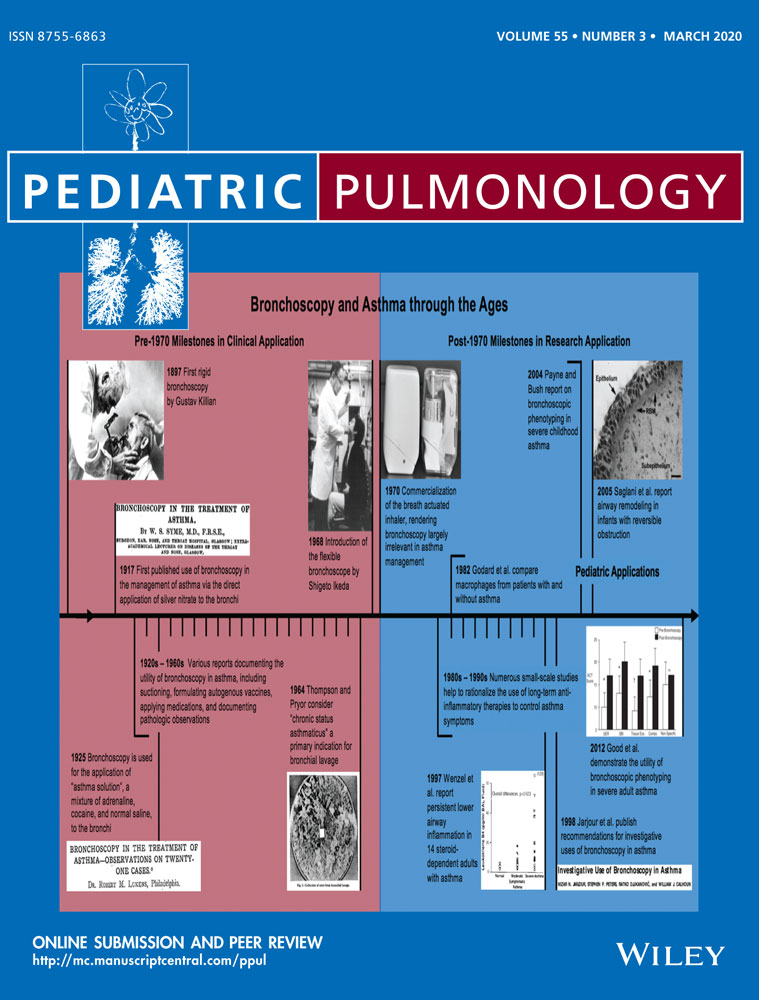Removal of distal airway foreign body with the help of fluoroscopy in a child
Abstract
Most foreign bodies are located in the central airways and can be reached and removed with either a flexible or rigid bronchoscope or a combination of the two methods. The removal of more distal foreign bodies can present a significant challenge. We describe a case of an 11-year-old child, who aspirated a sewing needle that lodged in a distal subsegment of the medial segment of the right lower lobe. As a result, it was visible only with the 2.8 mm flexible bronchoscope (FOB). Mono-planar fluoroscopic guidance was useful for confirming the placement of the 2.8 mm bronchoscope and allowing for a biopsy forceps to grasp the needle and move it to a larger airway, where it could then be removed safely using a larger FOB. Removal of radiopaque foreign bodies in the distal airways is possible with the aid of fluoroscopy and a small bronchoscope. This report also highlights the risk of aspirating sharp objects when they are placed into the mouth, especially by children, and the dangers posed by sharp object foreign body aspiration.




